Despite the uniqueness of Russian nature, Russian national parks are a new phenomenon here: they began to be created only in the 1980s. Now there are 46 national parks in the country and their number is growing every year.
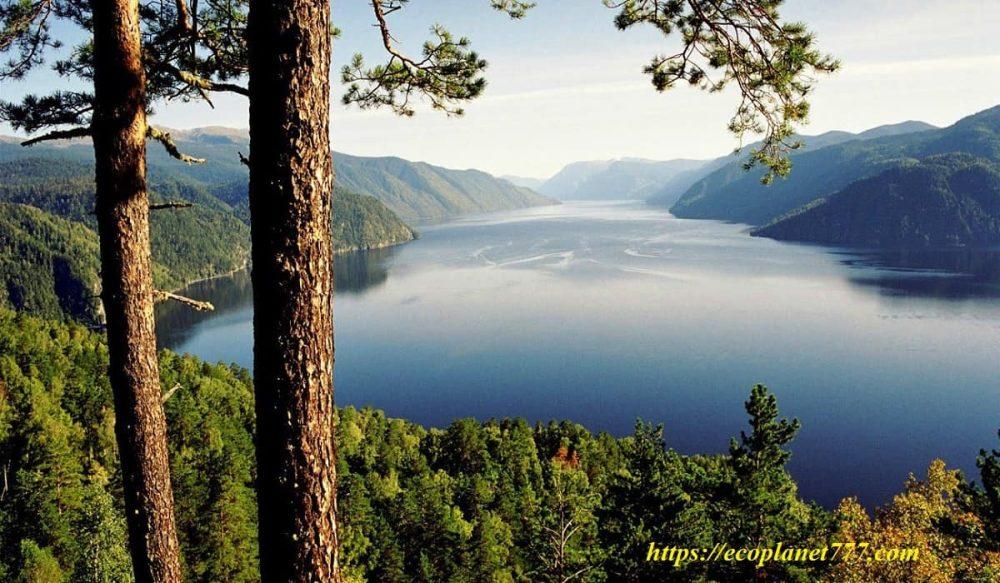
Reserves can be divided into 2 categories: natural parks, where you can admire the untouched flora and fauna, and natural – historical parks, where, along with natural beauties, precious architectural masterpieces are preserved, harmoniously integrated into the natural landscape.
Both types of parks are characterized by a kind of “wildness”. As a rule, these are places of amazing beauty, where nature and people live their lives. But very few of them are suitable for receiving foreign tourists. Local residents, as a rule, do not speak foreign languages, which does not prevent them from demonstrating the famous Russian hospitality. The level of comfort in hotels and campsites can be quite modest, but Russian national parks have no equal in the world for the authenticity of the setting and the feeling of merging with nature.
As a rule, a permit is required to visit the natural park. Usually permits can be bought at special visitor centers, whose contacts can be found on the website of the respective park.The infrastructure of national parks is well developed: most of them have hotels, tent camps or cottages for rent, excursions in the parks are available, and various routes for independent walks are laid. Fishing is allowed in many national parks, but requires a special license. At the same time, there are national parks where nature still dictates its own rules and where visitors must strictly observe safety precautions so as not to run into wild animals and not get lost in areas where mobile communications do not work. It should also be taken into account that some national parks are located in hard-to-reach places.
Some of the most beautiful nature reserves in Russia
Elk Island National Park
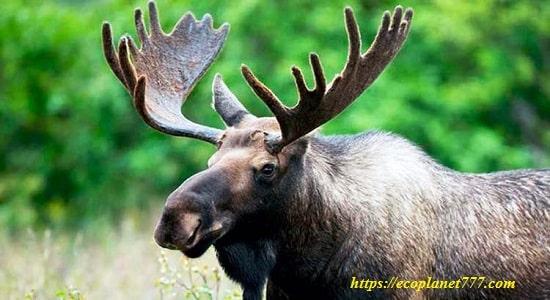
The island is located in the north-east of Moscow and stretches for kilometers of forests full of wild animals. You can admire beautiful coniferous and mixed forests and the valley of the Yauza River. The park is home to a small (about 100 individuals) population of elk, spotted deer and wild boar. By appointment it is possible to visit the moose biological station. This is the perfect place to stay close to the capital of Russia, but be sure to visit during the day as the area gets a bit dangerous at night.
Ugra National Park
Here the nature of the Russian middle zone fully reveals its beauty. The park is crossed by the rivers Ugra, Zhizdra, Vyssa and Oka, surrounded by small beautiful lakes (the largest of them is Lake Tish). More than 280 species of herbs grow on the Zalidovskie meadows, which are part of the national park.Some representatives of the local fauna are listed in the Red Book. These are storks, owls and Russian desman. Tourists are attracted by Chertovo Gorodishche – non-standard arena rocks for central Russia. The park is crossed by a number of horseback, walking and water (along the rivers) routes.
National parks Meshchera and Meshchersky
The modest nature of these swamps was described by the Soviet writer K. S. Paustovsky in the book “Meshcherskaya side”. Now there are two national parks nearby. The forests are dominated by taiga trees, and there are many lakes around the rivers. These places attract fishermen and mushroom pickers. The park has many ecological paths and river routes. On the territory of the Meshchera National Park there is a historical and local history complex with ancient buildings of the 19th century, and on the territory of the Meshchersky National Park there is the city of Spas-Klepiki, where the poet S. Yesenin studied. Now there is a museum of the poet.
Lake Pleshcheyevo
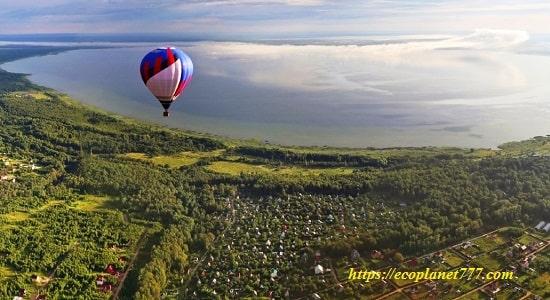
The “heart” of the reserve is a large round freshwater lake, on the banks of which the ancient city of Pereslavl-Zalessky is located. You can also admire the Blue Stone, which was once a place of worship for pagan Russians, see the boat of Peter I or visit the Dendrological Garden. The lake is rich in fish: perch, ruff, roach. In summer, when the weather is good, windsurfing is popular here.
Smolensk Lakeland
The territory of this national park is covered with dense spruce forests, among which 35 lakes of glacial origin are hidden. The forests are inhabited by wolves, foxes, bears, wild boars, ermines, as well as rare birds, including black-throated diver, golden eagle, peregrine falcon, black stork. There are also historical objects: the hill on which the ancient city of Verzhavsk was located with a reconstructed pagan sanctuary, the Museum of N. M. Przhevalsky, the Museum of Partisan Glory, the private Museum of Birch Bark. There are a lot of trails in the park. It should be noted that visitors leave mixed reviews about their interaction with the park administration.
Oryol Polissya
First of all, this park is proud of its 200-head herd of “Red Book” bison, for which park rangers are trying to create conditions for active reproduction. The park has an open-air reserve for bison, bears, ostriches and peacocks. Pine forests of the southern taiga dominate here, where taiga and steppe species of birds and small mammals coexist. According to legend, this is the place where the Nightingale the Robber from Russian fairy tales once lived. These places were also described by I.S. Turgenev in his book Hunting Sketches.
National parks of the North-West of Russia
Kenozero National Park
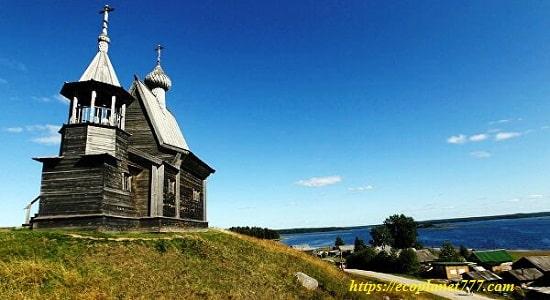
One of the most beautiful natural and historical parks in Russia, located in the Arkhangelsk region. Here you will be impressed by both nature and the ancient way of life of the peoples of the Russian North. This is the only national park in Russia, so rich in architectural monuments.On the shores of transparent lakes there are wooden churches of the 17th-18th centuries, and the surrounding forests are rich in northern berries: cloudberries, lingonberries, cranberries. In the village of Vershinino there is a museum where you can see old household items and arts and crafts. Fishing in the area is also good.
Onega Pomorie
This national park in the Arkhangelsk region was opened not so long ago – in 2013, but quickly became popular among tourists. The park is unique in that it is located on the shores of the White Sea – nowhere else in Europe do taiga forests reach the sea coast. Near the sea there are habitats for ringed seals, bearded seals, harp seals, beluga whales, for the observation of which special observation points are equipped. You can also see the traditional taiga animal: brown bear, marten, mink, ermine. The routes of migratory birds pass over the park. In a word, this park is a paradise for zoologists and ornithologists, both professionals and amateurs.
Russian North National Park
 Northern nature and ancient architecture are wonderfully combined in the National Park, located in the Vologda region. Several ancient monastic communities are located on the territory of the park: Kirillo-Belozersky Monastery, Ferapontov Monastery, Goritsky Monastery. White-stone churches contrast brightly with green meadows and clear lakes. Moose, heather roosters, bears, ermines, meat-fishing birds live in the surrounding forests. Light and beautiful Sokolsky Bor is popular with mushroom pickers and berry pickers.These places have been attractive since ancient times: on the banks of the Modlon River, the remains of a settlement dating back to the third millennium BC have been preserved.
Northern nature and ancient architecture are wonderfully combined in the National Park, located in the Vologda region. Several ancient monastic communities are located on the territory of the park: Kirillo-Belozersky Monastery, Ferapontov Monastery, Goritsky Monastery. White-stone churches contrast brightly with green meadows and clear lakes. Moose, heather roosters, bears, ermines, meat-fishing birds live in the surrounding forests. Light and beautiful Sokolsky Bor is popular with mushroom pickers and berry pickers.These places have been attractive since ancient times: on the banks of the Modlon River, the remains of a settlement dating back to the third millennium BC have been preserved.
Paanajärvi
Located near the Arctic Circle in Karelia, this park is notable for its rugged nature. The treasure of the park is Lake Paanajärvi, one of the deepest among small lakes, the Kivakkakoski waterfall on the Olanga River, as well as the Nuorunen and Kivakka mountains. The latter offers an impressive view of the entire park. On this mountain you can also see seits – stones set in a special way, which used to be the object of worship of local tribes. The park is also attractive for fishermen: the local waters are rich in delicious salmon fish – bull trout. However, fishing requires a license. Entrance to the park is possible through the visitor center in the village of Pyaozersky. Please note that mobile phones do not work in the park.
Kalevala National Park
Here you will find virgin taiga forests inhabited by reindeer, bears and martens, and near the water – habitats of whooper swans. The landscapes are very picturesque, thanks to the shallow floods of rivers and lakes (the largest of them is called Lower Lapukka). Rare mollusks live in their clear waters – freshwater pearl mussels. Karelians are the descendants of the indigenous inhabitants of those lands, they live in harmony with nature. By visiting the traditional villages of Voknavolok, Panozero and Kalevala, you will be able to get acquainted with the culture and architecture of this ancient people.
Valdai National Park
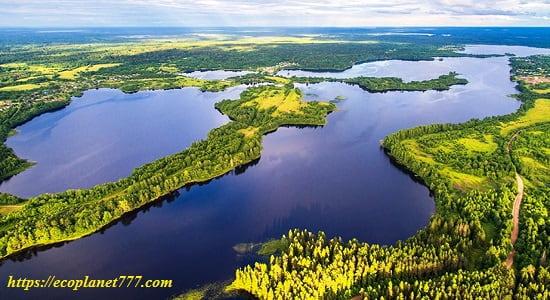 This park is known primarily for its lakes: there are 76 large and small lakes on its territory with a total water surface area of 14,704.5 ha. The largest lake is Lake Valdai. On its shore is the beautiful Valdai Iversky Monastery of the 17th-18th centuries. Seliger is another most popular lake in the park. It often hosts song festivals composed and performed by amateur singers and composers, as well as tourist meetings. The lake is river, you can take a cruise on a passenger motor boat. The flora and fauna of the park includes species that live in areas from the border of the southern taiga to mixed coniferous-deciduous forests. Here you can see elk, marten, wild boar, black grouse, hazel grouse. Tench, crucian carp, bream are found in the lakes. The ancient provincial town of Valdai is also located on the territory of the park. The park is very popular due to good transport accessibility and relative proximity to Moscow and St. Petersburg.
This park is known primarily for its lakes: there are 76 large and small lakes on its territory with a total water surface area of 14,704.5 ha. The largest lake is Lake Valdai. On its shore is the beautiful Valdai Iversky Monastery of the 17th-18th centuries. Seliger is another most popular lake in the park. It often hosts song festivals composed and performed by amateur singers and composers, as well as tourist meetings. The lake is river, you can take a cruise on a passenger motor boat. The flora and fauna of the park includes species that live in areas from the border of the southern taiga to mixed coniferous-deciduous forests. Here you can see elk, marten, wild boar, black grouse, hazel grouse. Tench, crucian carp, bream are found in the lakes. The ancient provincial town of Valdai is also located on the territory of the park. The park is very popular due to good transport accessibility and relative proximity to Moscow and St. Petersburg.
Vodlozersky National Park
The park, located partly in Karelia and partly in the Arkhangelsk region, got its name from Lake Vodlozero, one of the best fishing spots in Karelia. The lake is inhabited by vendace, lake herring, freshwater cod, pike perch, and ide. The lake is surrounded by swamps and protected spruce and pine forests, which are inhabited by bear, lynx, mink, badger. On the territory there is an old cemetery – Ilyinsky churchyard with a wooden chapel.
Russian Arctic
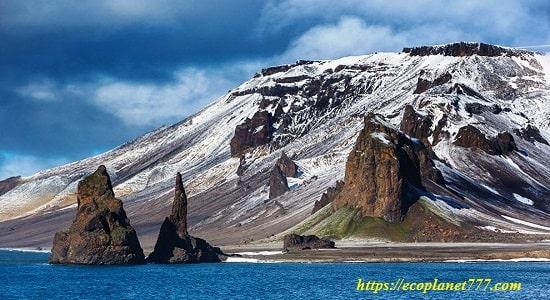
One of the most inaccessible national parks in Russia is located on the Novaya Zemlya archipelago. You can get there only during the cruise tour. But the trip is worth it. In the park you can see polar bears, walruses, seals, ringed seals. You can feel the colors of northern nature with its laconic landscapes covered with moss and lichen.
Yugyd Va
It is the largest national park in Russia with an area of 1,891,701 hectares and the largest piece of wild forest in Europe. This unique park, included in the UNESCO register, is located in the Komi Republic. In addition to virgin forests with beautiful northern flora and fauna, nature lovers should pay attention to mountain rivers (the largest of them are Shchugor and Kozhim) and numerous lakes. Since the park is located in the foothills of the Northern Urals, this place is popular among mountain tourism enthusiasts: the Manaraga and Narodnaya Mountains continue to attract new conquerors. Campfires, hunting and fishing are prohibited in the park.
Sebezhsky National Park
This park, located in the Pskov region, is famous for the fact that an ancient trade route passed along its rivers and lakes.Seen from above, the park’s 115 lakes resemble a bunch of grapes. Their shores are covered with pine forests, in which roe deer, foxes, and ermines live. The park is very attractive for fishermen: pike, bream, perch, sea eel, ide and catfish are found in its lakes. The beautiful city of Sebezh is located on the lake. There is also a unique lake Zelenets with emerald green water (due to dissolved hydrogen sulfide).
National parks of the South of Russia
Elbrus region
 The main attraction of this park, located in Kabardino-Balkaria, is, of course, Mount Elbrus (5642 m), one of the seven highest peaks in the world, which attracts climbers and skiers. Another attraction of the park is Narzan Polyana – a unique place with sources of healing mineral water Narzan. There are many tourist routes along the slopes of Elbrus and Mount Cheget. And many local gorges and mountain passes have a mystical reputation.
The main attraction of this park, located in Kabardino-Balkaria, is, of course, Mount Elbrus (5642 m), one of the seven highest peaks in the world, which attracts climbers and skiers. Another attraction of the park is Narzan Polyana – a unique place with sources of healing mineral water Narzan. There are many tourist routes along the slopes of Elbrus and Mount Cheget. And many local gorges and mountain passes have a mystical reputation.
Sochi National Park
This park includes the subtropical coast of the city of Sochi and the Caucasus Mountains towering above it. On the mountain slopes there are many small and large waterfalls, turbulent mountain rivers and springs, caves and relict groves, as well as cult stones and Neolithic settlements. Here you can easily combine relaxation at sea and the study of natural attractions.
National parks of the Volga Federal District
Bashkiria National Park
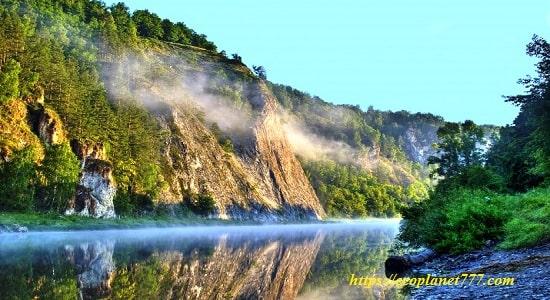 91% of the territory of this national park, located on the southwestern slopes of the Southern Urals in Bashkortostan, is covered with dense broad-leaved forests inhabited by bear, fox, lynx, badger, mink, muskrat, elk and other roe deer. The pearl of the park is the Kutuk-Sumgan landscape area with 36 mortar caves, a tunnel, funnels, disappearing rivers and springs. The Sumgan cave is the longest in the Urals, the total length of its passages is almost 10 km. Tourists also admire the high karst bridge of Kuperl across the river of the same name.It is also worth visiting the Bear Meadow, covered with relic ancient bulbous plants. The park offers many hiking and horse trails.
91% of the territory of this national park, located on the southwestern slopes of the Southern Urals in Bashkortostan, is covered with dense broad-leaved forests inhabited by bear, fox, lynx, badger, mink, muskrat, elk and other roe deer. The pearl of the park is the Kutuk-Sumgan landscape area with 36 mortar caves, a tunnel, funnels, disappearing rivers and springs. The Sumgan cave is the longest in the Urals, the total length of its passages is almost 10 km. Tourists also admire the high karst bridge of Kuperl across the river of the same name.It is also worth visiting the Bear Meadow, covered with relic ancient bulbous plants. The park offers many hiking and horse trails.
Maria Chodra
This national park is located in the Republic of Mari El near its capital, Yoshkar-Ola. It is known for its karst lakes, which are very popular as a place of recreation for the local population and tourists (the largest lake is called Yalchik). There are also springs of mineral water in the park (the most famous is the Green Key). Walking and horseback trails criss-cross light-colored pine forests, and Maple Mountain offers spectacular views of the surrounding area. There is also a historical landmark – an oak, from which the leader of the 18th century uprising, Pugachev, watched the burning Kazan.
Smolny National Park
The park is located in the Republic of Mordovia and was created to preserve the fragile ecosystem of the forest, turning into lowland forest-steppe. The territory of the park is crossed by the Alatyr River, surrounded by numerous ravines. Its floodplain with water meadows and numerous marshes forms an ornithological area of world importance. Curlew, imperial eagle, European oystercatcher, pale harrier and eagle owl nest here. These lands are rich in mushrooms and berries that can be harvested.
Lower Kama
In this national park, located on the banks of the powerful Kama River in the Republic of Tatarstan, you can admire floodplain meadows, pine forests and oak forests. This is the habitat of the newt, elk and roe deer. The high banks of the Kama are cut by ravines, from which impressive views open up. The local dunes and bold sandy ledges are very photogenic, in the layered level open to every wind, the remains of the flora and fauna of the ancient sea have been preserved. In the part of the park called Beloussky Forest, you can find Siberian moss and other taiga plants. There are many springs in the park, the water of which is considered curative. Very beautiful and small lakes, surrounded by dense thickets of ferns in human growth. These places were captured by the famous Russian painter I.I. Shishkin. One of the routes through the park is dedicated to his paintings. Part of the park is the old city of Yelabuga with the Shishkin Museum, merchant houses and the museum of the famous Russian poetess Marina Tsvetaeva, who spent her last days here.
Nechkinsky National Park
 The park is located in Udmurtia, on the banks of the Kama and the Votkinsk reservoir. The territory of the park is diverse and includes mixed coniferous-deciduous forests, floodplain meadows and huge peat bogs. There are many different waterfowl pants and numerous waterfowl nest. Among the natural attractions, it is worth highlighting the impressive landscape massif of the Sidorovy Gory with layered deposits, in which ancient shells can be found. Here you can also see the remains of Neolithic, Bronze Age and early Iron Age settlements.
The park is located in Udmurtia, on the banks of the Kama and the Votkinsk reservoir. The territory of the park is diverse and includes mixed coniferous-deciduous forests, floodplain meadows and huge peat bogs. There are many different waterfowl pants and numerous waterfowl nest. Among the natural attractions, it is worth highlighting the impressive landscape massif of the Sidorovy Gory with layered deposits, in which ancient shells can be found. Here you can also see the remains of Neolithic, Bronze Age and early Iron Age settlements.
Chavash Varmane
This small (only 17 by 24 km) park is the pride of the Chuvash Republic. On its territory you will find a combination of diverse ecosystems, amazing in its diversity. Only plants, there are about 1000 species! More than 180 species of birds live in the park, among mammals are presented: hare, beaver, ermine, bear, elk, wild boar. There are 8 hiking trails in the park. This area was used for the extraction of swamp ore, and abandoned mines have become one of the local attractions. The most picturesque natural and historical monument of the park is the 16th century defensive screen against nomadic raids – the Karlinskaya chain of fortifications.
Samarskaya Luka
One of the few Russian parks protected by UNESCO. It is located near the city of Samara, on the banks of the reservoir. In the park you can admire the nature of the forest-steppe with its broad-leaved forests and rocky steppes. Some plants have survived from the Pliocene and the Ice Age. Part of the park is occupied by the low (up to 381 m) Zhiguli Mountains, covered with pine forests. Tourists can climb many peaks and enjoy impressive views of the river. More than 500 karst funnels and cavities cut through the picturesque territory. The caves are home to the largest colony of bats in Europe – about 30,000 species. The “water population” is also numerous (especially rich in bream and pike), which attracts fishermen to the park. In addition to natural attractions, there are interesting museums here, including the House-Museum of the famous Russian artist I.E. Repin, the Museum of History and Life and the House-Museum of the Fox – the talisman of those lands.
Khvalynsky National Park
 The park is located in the Saratov region and is famous for its photogenic chalk mountains and pine forests. Noteworthy is the Monk’s Cave (Monk’s Cave), which used to be a haven for the Old Believers (a religion banned in Russia). The park offers many ecological and excursion routes: from ordinary walks to complex options with a visit to the bathhouse and water procedures. Tourists with children like the local courtyard, where you can see deer, roe deer, pheasants and other animals.
The park is located in the Saratov region and is famous for its photogenic chalk mountains and pine forests. Noteworthy is the Monk’s Cave (Monk’s Cave), which used to be a haven for the Old Believers (a religion banned in Russia). The park offers many ecological and excursion routes: from ordinary walks to complex options with a visit to the bathhouse and water procedures. Tourists with children like the local courtyard, where you can see deer, roe deer, pheasants and other animals.
National parks of the Urals
Pripyshminsky forests
Here, the taiga nature fully reveals its beauty: these are old spruce, pine and fir forests, covered with rare plants – heather and Siberian lily. “Harvests” of mushrooms and berries are also in abundance there. Transparent lake Gurino with several boarding houses also promises a pleasant stay.
Zuratkul National Park
One of the most popular national parks in the Urals. Here is the Zyuratkul mountain range and the lake of the same name, which is the highest mountain lake in the Urals. It is located at an altitude of 724 m above sea level. Tourists can climb Mount Zyuratkul along an ecological route (height 1100 m). Climbing is quite easy even for a beginner. From the top, a wonderful view of the lake and other peaks opens up, among which Golay Sopka stands out with its snow-white peak (1056 m above sea level). A notable feature of the local landscapes are huge white stones – rock pillars, which were the place of worship of the ancient tribes. Powerful rocks about 50 m high are also impressive, the shape of which resembles ribs, known as the Zyuratkul pillars. Another amazing attraction of the park is the artesian fountains, which in winter turn into a huge rising icicle. Every year the park receives a large number of visitors, which, unfortunately, has a negative impact on the service.
Taganaysk National Park
Taganay National Park is located in the Ural Federal District of Russia, near the city of Chelyabinsk. It is famous for its unique natural beauty, which is best appreciated in summer. The park is home to many wildlife and various types of plants and trees, and has several hidden and untouched ecosystems including tundra, grasslands, forests and woodlands.
This park is known for its high mountain ranges.Thanks to the mountain landscape, the nature of several climatic zones is present here: mountain-meadow, taiga and tundra. The highest mountain is Kruglitsa (1178 m) with an unusual stone peak. The Otkliknaya Ridge is also very picturesque – a long ridge-shaped mountain that gnaws at the rocks like teeth. Photographers and lovers of mysticism are fascinated by the Valley of Fairy Tales, where vertical rock pillars resembling fairy-tale creatures are hidden among the trees. Another notable local attraction is the “stone rivers”. These are strips of chaotically heaped boulders descending the slopes of the mountains. One of these “rivers” is a profitable deposit of gold stone. The park is easily accessible by transport: regular buses run from the nearby town of Zlatoust.
National parks of Siberia
Pribaikalsky and Zabaikalsky national parks
As the name implies, both reserves are located near the famous Lake Baikal and are part of the UNESCO protected zone.
Pribaikalsky Park is the largest among the parks located around the lake. It includes most of its western coast with beautiful rocky islands, picturesque beaches and bays, as well as the famous Olkhon Island with relic spruce forests. Here is the source of the Angara and the mysterious Shaman rock – a place covered with legends. Not far from it there is a unique wintering ground for waterfowl, where up to 15,000 individuals find shelter in winter. In autumn, you can watch the busy sky routes of migratory birds. The bird’s market cliff with nests of seagulls located on its walls is very colorful.The cultural sights of the park are also impressive: rock paintings, which are more than 2500 years old. The local monument of mechanical engineering – the Circum-Baikal Railway – is of historical importance.
Zabaikalsky National Park
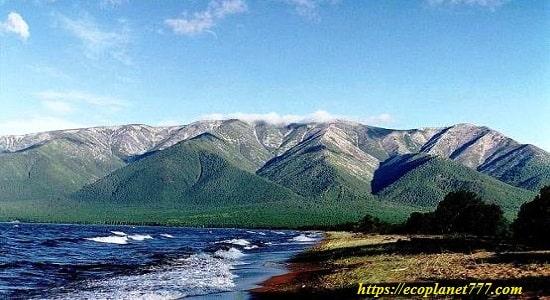 Located on the eastern shore of Lake Baikal. On its territory are the Barguzinsky and Chivyrkuisky bays, as well as the mountain peninsula Svyatoy Nos, Ushkany and the Chivyrkuisky Islands. The park is crossed by two mountain ranges – Barguzinsky and Sredinny. In addition to Lake Baikal, the park has several smaller lakes, mostly of karst origin, and Arangatui swamps with gloomy lunar landscapes. An impressive picture of local nature is complemented by thermal springs, the most famous of which is called Serpentine. Its water is rich in hydrogen sulfide and is beneficial for the musculoskeletal system. Those who are fond of history will be interested in the sites of people of the Bronze and Early Iron Ages.
Located on the eastern shore of Lake Baikal. On its territory are the Barguzinsky and Chivyrkuisky bays, as well as the mountain peninsula Svyatoy Nos, Ushkany and the Chivyrkuisky Islands. The park is crossed by two mountain ranges – Barguzinsky and Sredinny. In addition to Lake Baikal, the park has several smaller lakes, mostly of karst origin, and Arangatui swamps with gloomy lunar landscapes. An impressive picture of local nature is complemented by thermal springs, the most famous of which is called Serpentine. Its water is rich in hydrogen sulfide and is beneficial for the musculoskeletal system. Those who are fond of history will be interested in the sites of people of the Bronze and Early Iron Ages.
Tunkinsky National Park
This park is interestinag but difficult to access. And this is not surprising: on its territory there is the most important peak of the Sayan Mountains – Munku Sardyk (height 3491 m). The mountain is located partly in Russia and partly in neighboring Mongolia, so you need to get a Mongolian visa in advance to visit it.
Alkhanay
The main attraction of this park is the sacred mountain Alkhanay. It has great religious significance both for the local population – the Buryats, and for all northern Buddhists. On the territory of the park there is a huge number of temples and other sacred places, the rules for visiting which must be strictly observed. The mountain is also known for its healing spring. Another natural attraction of the park is the Temple Gate natural grotto with an inner radius of 6 m. Nearby on the walls you can see petroglyphs that are more than 3000 years old.
Shor National Park
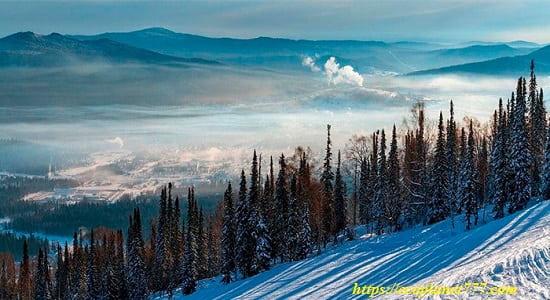
A hard-to-reach park, the sights of which are located far from each other. Many of them are only accessible on foot or by motorboat. Visitors go there to admire the Saga waterfall (15 m high), and the Mustang and Kul-Taiga mountains. At the top of the Kul-Taiga mountain there is a lake with clear water. There is an interesting open-air ethnographic museum dedicated to the life of the small indigenous people of the Shors.
Shushensky Bor
In this park, located in the Krasnoyarsk Territory, there are the Western Sayan Mountains with numerous peaks (the highest is Mount Poilova, 2378 m high). Many of them offer a beautiful view of the nearby reservoir and the Sayano-Shushenskaya HPP.The local sand dunes and glacial alpine lakes Venice and Banzai are very photogenic, but the real “hit” of the park is the Coil waterfall, which is a chain of small cascades with a total height of 300 m. In the park you will also find the hut where V.I. Lenin often stayed overnight while hunting.
National parks of the Far East
One of the most beautiful and amusement parks in Russia. First of all, as the name implies, the park is a habitat for a population of rare animals – Amur tigers. But besides this, tourists will find many attractions here. For example, they can climb Cloud Mountain, the highest in Primorye (1854 m). On the way to the top, mountain conquerors pass step by step through all climatic zones: taiga; pine and spruce forest; shunt forest with a predominance of stone birch; tundra; and, finally, the cold stone desert. There are other mountains available for climbing: Sister and Stone Brother, between which passes a ridge-shaped mountain, snapped by high rocks called “Dragon’s Teeth”; Lysaya and Snezhnaya mountains (all of them are over 1.5 km high). Mountain river Miloradovka with numerous rapids and a stormy 7-meter waterfall. There are 4 hiking trails in the park.
National Park “Land of the Leopard”

The park was created to preserve the extremely small Russian population of the Far Eastern leopard. Other representatives of the local fauna are the Himalayan black bear, brown bear, roe deer, lynx and sika deer. Only one ecological route is currently available.If you follow it, you will see leopard trails and caves where leopards sometimes bring their cubs out (but there is very little chance of seeing animals). The local flora is also unique, as it contains many relic plants. Part of the park, located near Vladivostok, borders on China.
Udege legend
One of the youngest national parks in Russia with an actively developing infrastructure. The park is located in the Primorsky Territory of Russia, in the foothills of the Sikhote-Alin Range. Noteworthy are rocky ledges above the river, small waterfalls, animal baths and trails, sanctuaries of local residents, as well as sites of ancient people.
Anyui National Park
Its ecosystem is considered the wildest in the Khabarovsk Territory. The park is covered with cedar and spruce forests. If you’re lucky, you can see rare animals here: a black bear and a tiger, as well as a relic turtle (in Lake Gassi). The territory is crossed by several rivers, along which rafting tours of various levels of complexity are organized. Tourists are attracted by the small Sagena waterfall (12 m high) and the Golaya hill, which offers a beautiful view of the Pikhtsa River.
Other well-known reserves
Ruskeala mountain park
Ruskeala Mountain Park is located in the Republic of Karelia in northern Russia, not far from Finland. The park is famous for countless native trees and plants, wildlife and beautiful aerial views. The Blue Highway, one of the most popular tourist routes in Europe, linking Russia with Finland, passes right through Ruskeala.
Peninsula Kamchatka
Tourists come to Kamchatka every year because of its famous wildlife, full-flowing rivers, beautiful hot springs and high snowy peaks. Getting here is not easy, but the desire to visit this picturesque corner of Russia is only growing.
Kamchatka volcanoes
 Volcanoes of Kamchatka are located near the city of Petropavlovsk-Kamchatsky and represent a large group of various volcanoes located on the Kamchatka Peninsula. There are about 162 volcanoes on the peninsula, 29 of which are still active and are part of the Ring of Fire, where the Eurasian tectonic plate meets the North American and Pacific plates. Six of these volcanoes are listed as UNESCO World Heritage Sites.
Volcanoes of Kamchatka are located near the city of Petropavlovsk-Kamchatsky and represent a large group of various volcanoes located on the Kamchatka Peninsula. There are about 162 volcanoes on the peninsula, 29 of which are still active and are part of the Ring of Fire, where the Eurasian tectonic plate meets the North American and Pacific plates. Six of these volcanoes are listed as UNESCO World Heritage Sites.
Baikal Reserve
The Baikal Nature Reserve, home to the largest lake in Russia, Lake Baikal, is located in the southern part of Eastern Siberia, bordering the city of Irkutsk and the Republic of Buryatia. The lake is considered the oldest and deepest freshwater lake on the planet. The fauna around the lake is quite rich and varies from region to region.
Altai National Park Tavan Bogd
The Altai Tavan Bogd National Park is home to the Altai Mountains, which are famous for their picturesque views and location. Mountains, mostly of volcanic origin, pass through the territory of Russia, China, Kazakhstan and Mongolia and are the highest in Siberia.
Reserve Shulgan-Tash
The Shulgan-Tash Reserve is part of the Bashkir Urals, a UNESCO World Heritage Site, in the Southern Urals in Bashkortostan. The territory is quite wide and rich in archaeological, natural and cultural monuments.
P.S.
If you liked and found this information useful, please share it on social media. networks with your friends and acquaintances. This is how you support our project “Ecology of Life” and make your contribution to the preservation of the environment!
- Magnetic storms: the sun is testing the planet🌪️ - 13.06.2024
- Why You Should Drink Chicory: Benefits and Harms 🌿 - 09.06.2024
- Innovative Choice: Sproud Milk – Your Ideal Plant-Based Drink 🌱 - 03.06.2024
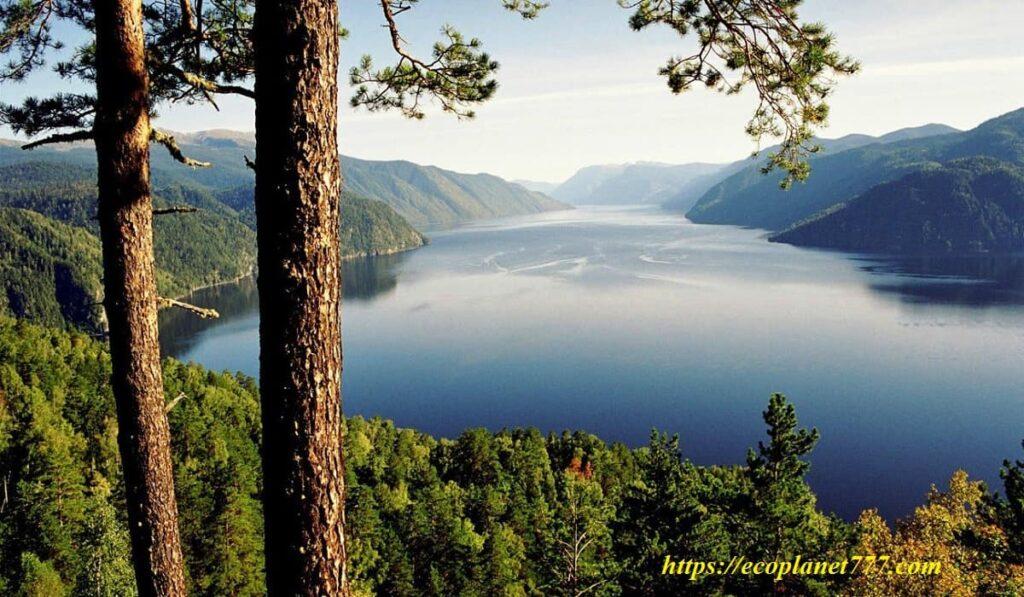
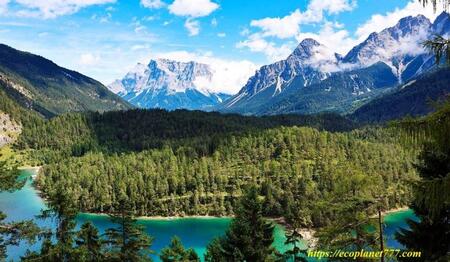

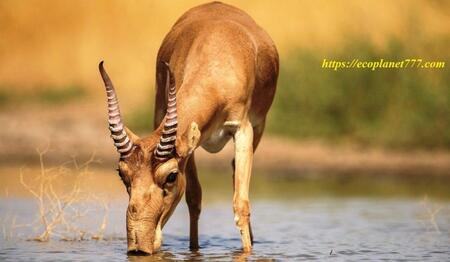



Not spending superfluous words.